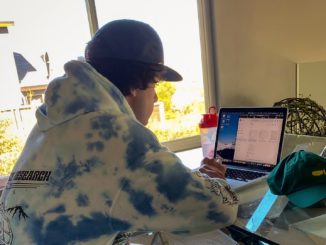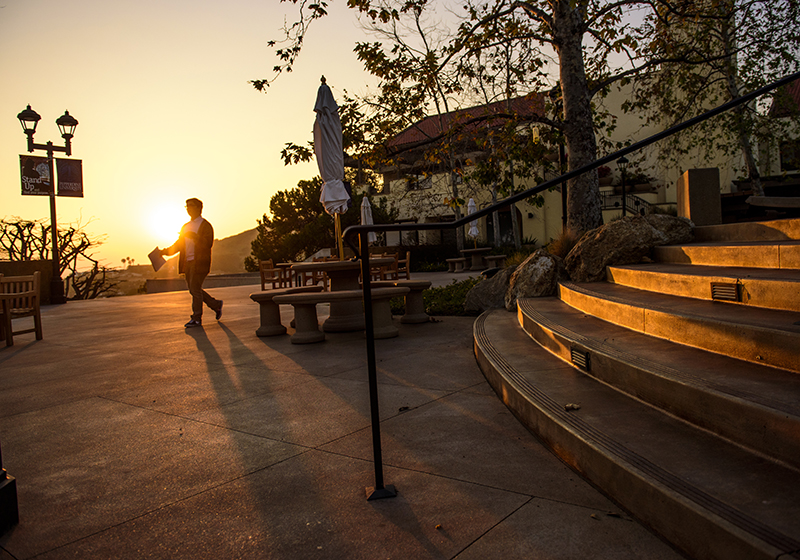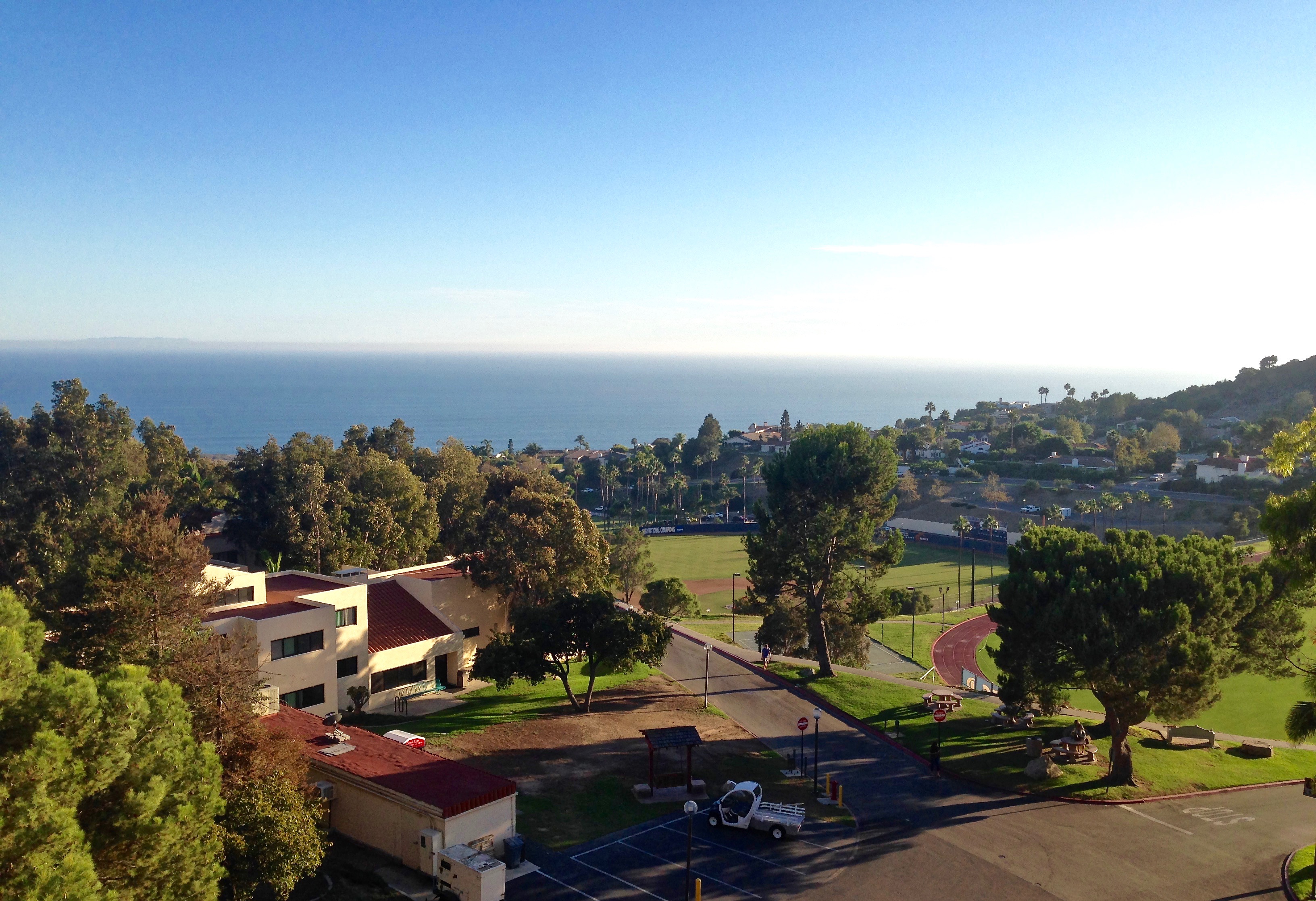
Pepperdine is infamous for its abundance of stairs, luxury cars, and most importantly, its expensive price tag.
Pepperdine’s tuition has increased an average of 4 percent each of the last three years, and there’s no end in sight to the annual tuition hike. The need to provide financial support for Pepperdine’s faculty and staff affects the tuition on a yearly basis.
“There is no question that tuition will go up,” Seaver College Dean Michael Feltner said. “We do our very best to manage and to minimize how much that increase has to be.”
This graph shows Pepperdine’s flat rate and net tuition in the last three years.
Flat rate tuition is the full cost of tuition without any financial aid offered from the school.
Net tuition is the average cost of tuition after financial aid is distributed.
Many students said they think the tuition increase is unfair and unnecessary, but they also don’t know what the increases are for.
“I don’t know the exact reason but I guess it is because Pepperdine expanded more international programs,” said Yuanxi Cao, a junior integrated marketing communication major.
Austin Norton, a junior political science major, said he believes that they increase tuition to improve the campus, “but not necessarily the student quality of life.”
Ultimately, Pepperdine is a non-profit organization and the tuition and its increases is for the benefit of the students.
“If the tuition doesn’t go up, it wouldn’t be good for the institution,” Feltner said.
Where the tuition money goes
Both Feltner and Chief Financial Officer Paul Lasiter said there are multiple elements that cause the tuition increase, principally being the cost of personnel.
“The biggest cost Seaver College has is personnel,” Feltner said. “In any educational institution, it’s the cost of people.”
Some 75 percent of the cost that it takes to operate Seaver College is salaries and benefits, which need to increase with the cost of living.
As the cost of living goes up, especially in Malibu, Pepperdine most also increase the salaries of the faculty and staff.
An educational institution must “provide people modest increases in salaries each year, to cover increases in the costs in their lives, we need to cover the costs of benefits for employees,” Feltner said. “Healthcare and other things keep increasing at a rate much greater than higher education costs.”
This graph shows the annual net tuition increase per student.
This chart shows Pepperdine’s expenses in 2015, with a majority of costs being personnel.
Pepperdine also makes strategic investments in the college to add resources to improve programs and to add new positions.
After the costs of faculty and staff, tuition is dispersed across the student body as different grants and scholarships.
“The vast majority of every tuition dollar is going to financial aid, it’s going to pay the people that work here, it’s going to deliver our programs,” Feltner said.
Everything dollar that is received by Pepperdine is put back into the institution.
“We are putting every penny that we get from tuition back somewhere into the university,” Feltner said.
Brand image affects the tuition rate
This chart shows the tuition of other universities and their rankings.
Lasiter said that when they think about setting the tuition rate, they have to think about Pepperdine’s position in the market.
Pepperdine ranks within the top 50 universities within this nation, and its tuition should be within that same range.
Lasiter said Pepperdine is in competition with other schools, especially private institutions where the tuition is generally steep. If Pepperdine’s tuition were to decrease, there would be questions raised about what was cut and if there was a decrease in brand quality.
Brand quality is the public’s perception of the institution and its value.
The tuition price is moved depending on the competition and the demand. Lasiter said that when he prices the tuition, he wants to demonstrate that Pepperdine has a valuable service and is offering a premium experience, while also striving to keep it affordable.
It’s a tough balancing act
“We have great awareness of what our tuition is,” Feltner said. “We do our very best to try to balance the need to continue to provide an educational experience that students want and expect and to support our faculty and staff, in terms of being able to pay them what they merit so that they can provide for their families and to make sure that we continue to invest in our programs.”
The deans and financial aid officers realize and understand how much tuition costs.
“We always try to air on the side of decreasing the burden to our families and our students,” Feltner said.
Lasiter said only 17 percent of U.S. students pay the full-rate tuition.
Lasiter said the students who pay full tuition are indirectly paying for the students who don’t pay full tuition, for example, athletes with a full-ride scholarship.
Unlike other institutions, Pepperdine increases the financial aid as the tuition increases.
Student responses to the tuition increases
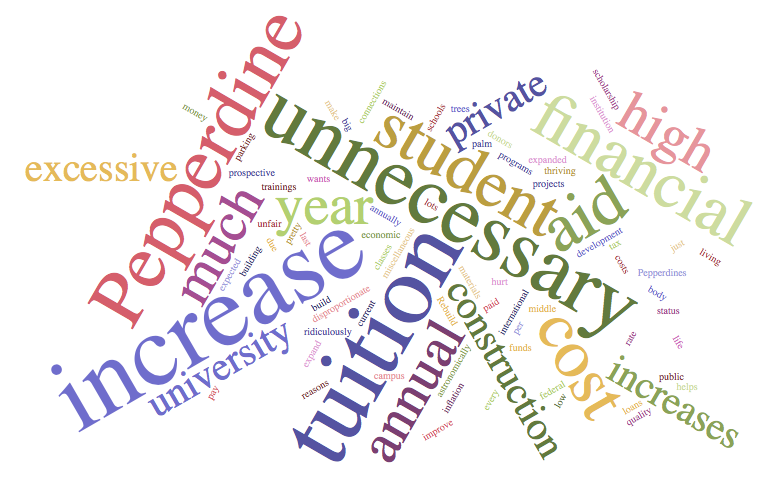
A word collage made out of the many words used when students are asked about Pepperdine’s tuition and its increase (Collage by Elisa Kim).
Roughly less than one out of five U.S. students pay the full price. But jokes about tuition abound such as “I can’t believe I pay $67,000 for tuition and there’s no parking” or “I can’t believe I pay $67,000 to have the shuttle be 25 minutes late.”
This graph shows how many students at Pepperdine receive financial aid.
Even after receiving financial aid, students still deem Pepperdine’s tuition to be unreasonable.
Junior advertising major Kayla Lee and Norton both think that the tuition is “unnecessary.”
“It’s pretty obvious that no one likes Pepperdine’s tuition,” Lee said. “It’s excessive.”
Many other students agree.
“The annual tuition increase is disproportionate to the annual federal inflation rate,” said Yvonne Ramirez, a junior international political science major. “Thus (it) serves to hurt the current and prospective student body more than it helps the university.”
Elise Sanchez, an international studies and French double major, said she is going to be reapplying to be a residential adviser next year so that she can receive a scholarship that would relieve the cost of her tuition.
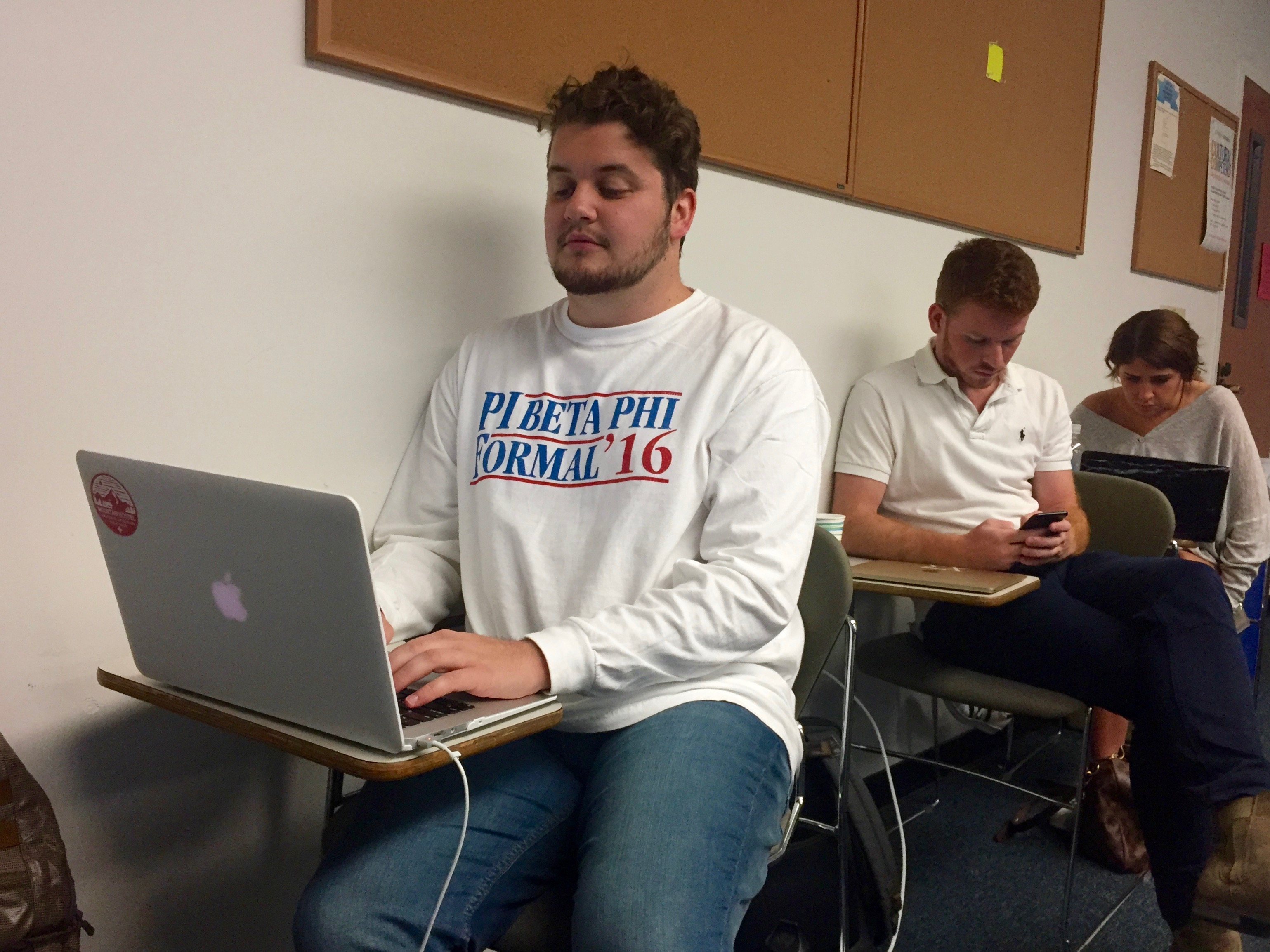
Nick Janner, junior integrated marketing communication major, working on an assignment in the classroom (Photo by Elisa Kim).
“I think our tuition is astronomically high,” said Nick Janner, a junior integrated marketing communication major.
It is not uncommon for a student to be unhappy when the annual tuition increases occurs.
“I think the tuition increase has become expected every year,” said April Chung, a junior public relations major. “But I don’t particularly feel happy about it each time around.”
Danielle Croner, a junior integrated marketing communication and Spanish double major, works in the financial aid office and gets a lot of phone calls every year from students and parents who don’t understand why there is an increase. She said there is not really much that she can tell them except that the tuition increase in inevitable and that it happens every year.
“It’s hard to understand it,” Croner said. “Here we are paying an extra $2,000-$3,000, but we don’t necessarily see that money tangibly put to use. It’s hard for students to grasp why it happens.”
She deals with many upset students and understands the stress that students go through.
“Just in general, students on topics like a tuition increase, might get them upset with Pepperdine and they are quick to place the blame,” Croner said. “There are so many offices here that they could talk to if something was upsetting them (…) they can try to understand the situation a little bit more.”

Placards showing the names of people who have donated endowments to Pepperdine (Photo by Elisa Kim).
A solution to the tuition increases
Lasiter said the ultimate solution to Pepperdine’s high tuition increases would be endowments.
Older schools will have a slightly lower tuition cost or tuition increase because they have a larger number of alumni, which results in more endowments and funds for the institution.
The University of Southern California received $4.6 billion in endowment support,according to a USC News article. Whereas Pepperdine received around $34 million, Lasiter said.
The financial office and the deans work tirelessly to provide “an educational experience that is equal to the cost,” Feltner said.
Elisa Kim completed this story as part of Dr. Christina Littlefield’s fall 2016 Jour 241 class.

